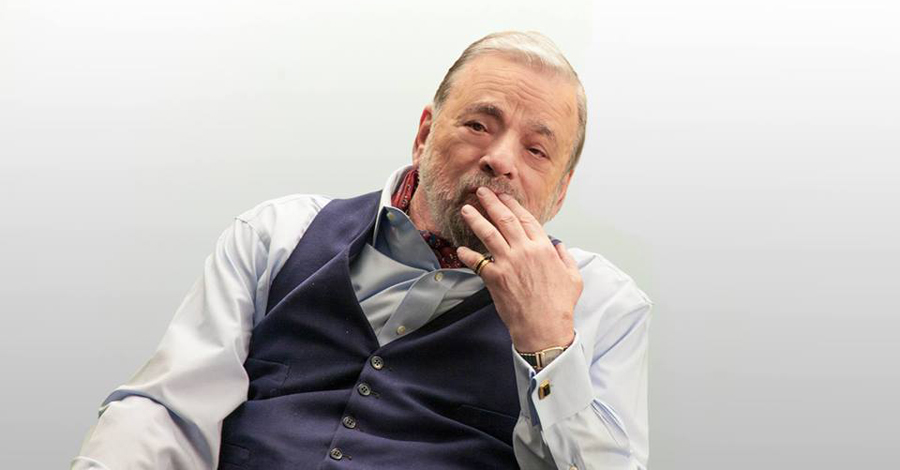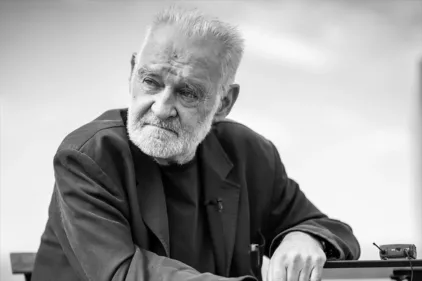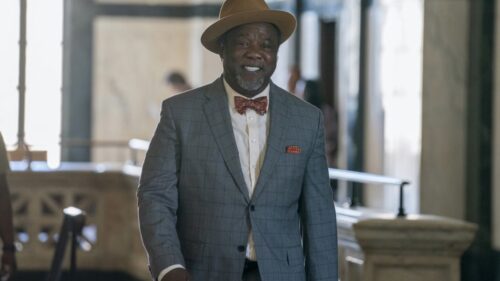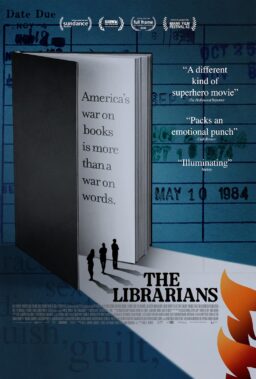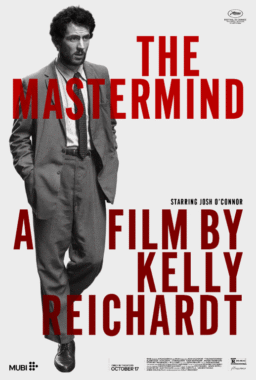Stephen Sondheim’s art was rooted in truth. More than the melodies, more than the arrangements, more than the choice of subject matter, more than his puzzle-maker’s sense of structure, it was his commitment to truth that made the work great.
Any time you sat down to watch one of his musicals or listen to one of his songs, you entered into a pact with Sondheim: he was going to tell you the truth, the hard truth, about life as he saw it, compassionately but without sugarcoating anything. You, the audience member, were going to accept that the truth was messy, and that Sondheim wasn’t here to lie about that. He wasn’t going to give you the sorts of easy reassurances and neat resolutions that the marketplace tends to demand of entertainers and artists. You were going to think and feel, and what you thought about and felt might not necessarily fill you with affection and hope for humanity.
That was inspiring, because it was brave.
Like so many creative people, I thought of Sondheim as a guiding light. I knew I was never going to reach the heights that he did as an artist or poet and scholar of human experience, because Sondheim was the American Shakespeare.
But thanks to Sondheim, I had an example of what to aim for.
Along with a handful of other theater luminaries—including his mentor, lyricist Oscar Hammerstein II (“Oklahoma!” “Carousel”)—Sondheim produced work that was as close to uncompromised as it was possible for an American to get.
The appeal of Sondheim is his pursuit of The Truth, caps on both words. Not truth as “telling my truth,” but The Truth: an account of existence that speaks to everyone, whatever the specifics of their lives.
You can’t capture The Truth unless you forget about trying to create a hit or a critic’s darling or a snapshot of the zeitgeist, and instead take a hard look at the basics: love, fairness, psychology; coincidence, fate; the intertwined drives to create and destroy.
These are matters that we can all agree are hard to talk about, and that don’t yield answers—at least not the kind that we may long to hear, like, “True love conquers all” and “The arc of the universe bends towards justice.”
Sondheim wasn’t a pessimist or a knee-jerk contrarian, so he didn’t answer those questions and others like them with a flat, “No—it doesn’t.” He liked to put a “maybe” in front of those types of assertions, and tack an “except when it doesn’t” onto the end, then build that out into something more complicated than you expected to find in a musical. He was adamant that unresolved contradictions were an immutable part of life, they were inherently fascinating, and they could be funny when framed just so.
And because each person is a unique bundle of contradictions and often uncontainable drives, Sondheim’s songs never lacked for richness and beauty. The best observed the interior life of individuals as astutely and unmercifully as Shakespeare’s plays, which the scholar Harold Bloom posited as the forerunner of Sigmund Freud’s writings on psychology.
Look at the songs from just one Sondheim classic, 1970’s Company, about the complexities of sex, love, and commitment. In the HBO documentary “Six by Sondheim,” Sondheim recalls being mystified by a rave review praising the musical as an attack on marriage when in fact it was simply, and above all else, “about marriage.” It’s a sardonic affirmation of how impossible and unresolvable and fraught with pitfalls and downsides even a great marriage can be.
This is all crystallized in “The Little Things You Do Together,” which feels at once celebratory and rueful.
It’s the little things you share together
Swear together
Wear together
That make perfect relationships
The concerts you enjoy together
Neighbors you annoy together
Children you destroy together
That keep marriage intact.
And then:
[It’s] the little ways you try together
Cry together
Lie together
That make perfect relationships
Becoming a cliche together
Growing old and gray together
Withering away together
That make marriage a joy!
That the words “a joy” are typically sung in a “joyful” way adds to the song’s delightful sense of unresolved tension and contradiction. Same with “And Jesus Christ is it fun!”, a line that the hard-edged Joanne (as played by the original cast’s Elaine Stritch) delivers in a voice that’s a laugh and a sneer.
In that the same musical’s “Being Alive,” the commitment-phobic Bobby gets close to an epiphany while he sings (in a deliberately distancing, second-person voice) of wanting:
Someone to hold you too close
Someone to hurt you too deep
Someone to sit in your chair
And ruin your sleep
Someone to need you too much
Someone to know you too well
Someone to pull you up short
To put you through hell
Sondheim’s lyrics are filled with these sorts of constructions, juxtaposing feelings and ideas and whatever their opposites might be, and allowing them to coexist in the moment, seemingly on equal footing. They ask questions without supplying answers. They describe predicaments that are exciting and boring, ecstatic and misery-inducing, seemingly easy to grasp and yet, upon closer inspection, inscrutable.
Neither condition cancels the other. That’s what makes Sondheim Sondheim.
Consider “Move On,” from Sunday in the Park with George:
I chose and my world was shaken
So what?
The choice may have been mistaken,
The choosing was not.
It’s defiant. It’s regretful. It’s bewildered. It’s introspective. It’s several more things, all at the same time.
It’s four lines.
In Into the Woods, the Baker’s Wife sings a verse that reads like an affirmation that all experience, even the most awful kind, is preferable to never truly feeling your own existence as it unfolds:
Oh, if life were made of moments,
Even now and then a bad one — !
But if life were only moments,
Then you’d never know you had one
Sondheim’s mastery of language—not just of the meanings of words, but of the emotional effects that occur when they’re put together in a line, and the line’s meter, its sound—might seem as if it were meant to get the artist and the audience closer to answers. Instead, they (deliberately) got the listeners lost in a mirror-hall of meaning that denied or deferred a lot of the simpler pleasures.
Only the sheer beauty of the vocal and instrumental arrangements and Sondheim’s gift for a pleasing melody prevented the lyrics from becoming too demanding for some audiences to bear. The tension between the music and the lyrics could power a whole book, or podcast, by itself. It’s not unlike the feeling of watching “A Clockwork Orange” (a film Sondheim admired for lots of reasons) and being disturbed by how the ugliness of the content and the verve of the filmmaking seemed to work at cross-purposes, on purpose. Exhibits A and B within Sondheim’s body of work are probably Assassins, which consists of musical character portraits of various American assassins and would-be assassins, and that is almost maddeningly irresistible, given the subject; and Sweeney Todd, a quasi-operetta that takes the exploits of a vengeful murderer and the pie-maker who turns his victims into food and churns them into an epic of thwarted desire and fury, packed with eccentric, often hilarious supporting characters worthy of a Charles Dickens novel, and songs that are as beautiful as Todd’s actions are ghastly.
The resolutions that Sondheim’s music gave you were primarily musical and/or mathematical. His work didn’t give you the kind of resolution that let allowed you to leave the theater smiling and humming your favorite tunes, eager to have a nightcap and perhaps a dessert and then go home to sleep. He wrote songs that you had to struggle with and puzzle over, and that pulled your intellect and feelings in disparate directions.
Sondheim’s greatest musicals all began with the unstated proposition, “We’re adults here, so let’s not lie to each other about what life is.”
They also expected you to engage with the work on its terms, not yours.
His greatest collaboration with director James Lapine, Sunday in the Park with George, is the work that won him a Pulitzer for drama, arguably his masterpiece, and perhaps his most difficult and demanding, thanks to its conceptual boldness and lack of obvious emotional anchor points for the audience. George, a fictionalized version of painter George Seraut, paints his masterpiece Sunday Afternoon on the Isle of Grand Jatte, an “ensemble” painting filled wherein no person is looking at any other person; meanwhile, he clashes with his grandson, also named George, a contemporary painter. The musical is “about” a lot of things, including representation versus abstraction in the arts, the solitary nature of existence even in crowds, the unglamorous parts of the creative process, and the idea that artists create (and audiences seek out their creations) in part to understand life and distract themselves from the inevitability of death (which is connected, glancingly and with respect for the audience, to a blank canvas: the story ends with the words, “a blank canvas, his favorite—so many possibilities”).
There’s no reason why such a conceptually oriented work should engage the emotions, yet this one proved devastating.
That was Sondheim’s greatest trick.
He did it over and over, to greater and lesser degrees, throughout his career.
What a magician he was.
Upon Sondheim’s death, Imelda Staunton, who performed in several Sondheim productions, including revivals of Follies and Gypsy, said, “His stories will live as long as Shakespeare’s because he speaks about people, about emotional difficulties, about the need we all have for love or recognition and to be noticed. A lot of musicals are about happy things—but his musicals are about the difficult things.”
The difficult things, and the little things.
And the uncertainty.
And the not-knowing.
And having to live with, and in, the not-knowing.
You were never supposed to come out of Sondheim’s musicals feeling comfortable, released from any unpleasant feelings or lingering doubts about what, exactly, you just watched. Sondheim wanted audiences to talk about what he’d given them, see themselves in it, or not see themselves in it, and argue about it, criticize it, be moved by it, angered, saddened: all that and more. The audience was responsible for—to invoke another Sondheim touchstone—putting it together.
In interviews and tributes during the second half of his life, Stephen Sondheim frankly acknowledged that for such a long-lived musical theater force, he had surprisingly few commercial hits—and the songs that did become popular didn’t have any obvious outward indicators of being hits. He noticed that his hits tended to become hits because performers liked to sing them, and did them well enough that other singers were inspired to cover them, too. If they got performed enough times by enough singers that people had heard of, they got grandfathered into “hit” status even if they’d never previously appeared on any chart. “West Side Story” was not a hit during its original Broadway run, and its yearning masterpiece “Somewhere” only became a popular song to cover once stars like Dionne Warwick and Barbra Streisand imprinted their style upon it. Ditto “Send in the Clowns” from A Little Night Music, “I'm Still Here” from Follies, and many others.
The critics and even the fans kept having to catch up with him. Sometimes it took repeat viewings or listenings of a new work to get into Sondheim’s groove. People used to say about Stanley Kubrick that you always had to see his movies twice, the first time to get over whatever expectations you brought into it, and the second time to appreciate what it actually was. The same was true of Sondheim. He was that kind of artist.
He wanted you to lean forward and pay attention. He wanted you to think. And while he wanted you to like what he did, making people happy was not his primary goal in life. He was after other satisfactions.
Sondheim’s musicals hit a lot of the same sweet spots as the American and international art films that he loved: films like “Citizen Kane,” “The Elephant Man,” Au Hasard Balthazar,” “Out of the Past,” and the 1966, Soviet-produced “War and Peace.” He transformed Ingmar Bergman’s Shakespeare adaptation “Smiles of a Summer Night” into “A Little Night Music.” In the years before he died, he and David Ives were working on a musical that would fuse the plots of two Luis Bunuel films, “The Exterminating Angel” and “The Discreet Charm of the Bourgeoisie.” Playbill reported earlier this year that development of the project had been abandoned, but in his final interview, conducted five days before his death, he made it sound as if he and Ives were back at it again. (Sondheim provided a partial list of his favorite films to The Sondheim Review in 2005, around the same time that he curated a film series at the Museum of Modern Art.)
Sondheim loved pure entertainment as well, but only if it was cleverly imagined and assembled. There are no stupid or slovenly films on Sondheim’s list; even the silly comedies he cites, such as “This is Spinal Tap,” are written, directed and performed with ambition and intelligence. Sondheim co-wrote a gem of a murder mystery, 1973’s “The Last of Sheila,” with his friend and fellow puzzle-lover Anthony Perkins that showed how thoroughly he understood how to manipulate an audience.
He could do that. And he did, in production after production.
The fun aspects of a Sondheim musical were what allowed him to take risks everywhere else. He knew entertaining could be a Trojan horse for art. He viewed art as work. Not work as in drudgery: work as in a task, a process, a thing that had to be done.
He was never precious about his own work. He regretted (and occasionally revised) lines that he’d written decades earlier (he seems never to have been entirely satisfied with his efforts on his first major production, 1955’s “West Side Story”).
And even when the lyrics were acrobatically graceful, showy in the way that a gymnast could be, he rarely used words that you had to look up. Most of the sentences were short. Most of the words were simple. And there was always an idea in there that you could actually see or feel or otherwise grab onto. He wasn’t big on abstractions in lyrics, or bromides, or general sentiments. He liked for things to be concrete, their expression direct.
In an interview with National Public Radio to promote his classic two-volume book about the creative process, “Finishing the Hat,” Sondheim pulled two examples from Hammerstein to illustrate the values that he prized in lyric writing. First, he quoted “All the Things You Are,” written for Very Warm for May, as an example of a “lyrical cardinal sin:”
You are the promised kiss of springtime That makes the lonely winter seem long You are the breathless hush of evening That trembles on the brink of a lovely song.
“Those are all very pretty words, but what do they mean?” Sondheim told NPR. “Take a look at those images. I don’t know what they mean. I also don’t know how they apply personally to anybody. I just think they are poesy” — in the sense of forced, sentimentalized poetic writing — “and not poetry. Oscar did a lot of poetic writing, which I would call poesy, using images that are not germane to what’s going on. I think that’s just a writer trying to be poetic.”
But Hammerstein, said Sondheim, could also be genuinely poetic. Take, for example, the opening lines to Oklahoma‘s “Oh, What A Beautiful Mornin'”:
Oh, what a beautiful mornin’, Oh, what a beautiful day. I got a beautiful feelin’ Ev’rythin’s goin’ my way!
Sondheim says that though that lyrics don’t sound exciting on paper, they soar when set to Richard Rodgers’ score.
“This is a lyric that doesn’t look interesting, but it’s thrilling,” he says. “It’s made for music.”
“Finishing the Hat,” the phrase as well as the song itself, feels in some ways like a summing-up of Sondheim’s sensibility. A hat isn’t an object one thinks of as artistic, though there is an art as well as a craft to hatmaking. A hat is an article of clothing meant to protect the head and convey something about the wearer’s personality, their job, or some other bit of information. It’s functional. Making a hat is work. You design it, and then you make it. If there are difficulties or mistakes along the way, you deal with them as they arise. The creative process is a process, a physical as well as intellectual act. And it never ends. It’s about…
How you have to finish the hat
How you watch the rest of the world
From a window while you finish the hat
And it’s about how…
There’s a part of you always standing by
Mapping out the sky, finishing a hat
Starting on a hat, finishing a hat
The reward can be found in the next two lines:
Look, I made a hat
Where there never was a hat.

